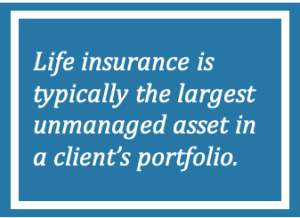The Ultimate Guide To Pacific Prime
The Ultimate Guide To Pacific Prime
Blog Article
Facts About Pacific Prime Uncovered
Table of ContentsA Biased View of Pacific PrimePacific Prime Fundamentals ExplainedHow Pacific Prime can Save You Time, Stress, and Money.Some Known Questions About Pacific Prime.How Pacific Prime can Save You Time, Stress, and Money.

This is since the information were gathered for a duration of strong financial efficiency. Of the estimated 42 million people that were uninsured, almost about 420,000 (regarding 1 percent) were under 65 years old, the age at which most Americans become qualified for Medicare; 32 million were grownups between ages 18 and 65, about 19 percent of all adults in this age; and 10 million were children under 18 years of age, regarding 13.9 percent of all youngsters (Mills, 2000).
These price quotes of the variety of persons without insurance are created from the annual March Supplement to the Present Populace Survey (CPS), performed by the Census Bureau. Unless otherwise kept in mind, national price quotes of individuals without health insurance coverage and percentages of the population with different type of insurance coverage are based upon the CPS, one of the most extensively utilized resource of price quotes of insurance policy protection and uninsurance prices.
The Definitive Guide to Pacific Prime

Still, the CPS is especially valuable due to the fact that it creates yearly quotes fairly rapidly, reporting the previous year's insurance protection approximates each September, and since it is the basis for a constant set of price quotes for greater than two decades, permitting analysis of fads in insurance coverage over time. For these factors, in addition to the extensive usage of the CPS in other studies of insurance policy coverage that are offered in this report, we depend on CPS price quotes, with limitations noted.

The quote of the number of without insurance individuals increases when a population's insurance policy standing is tracked for a number of years. Over a three-year period starting early in 1993, 72 million individuals, 29 percent of the U.S. https://ameblo.jp/pacificpr1me/entry-12846866195.html. population, lacked insurance coverage for a minimum of one month. Within a single year (1994 ), 53 million people experienced a minimum of a month without coverage (Bennefield, 1998a)
Six out of every ten without insurance grownups are themselves utilized. Although working does boost the probability that and one's household members will have insurance, it is not a guarantee. Even participants of families with 2 full time wage income earners have almost a one-in-ten possibility of being uninsured (9.1 percent without insurance price) (Hoffman and Pohl, 2000).
Pacific Prime - Truths
New immigrants account for a significant proportion of people without medical insurance. One analysis has actually attributed a significant part of the current development in the dimension of the U.S. uninsured population to immigrants that got here in the country between 1994 and 1998 (Camarota and Edwards, 2000). Recent immigrants (those that involved the USA within the past four years) do have a high price of being without insurance (46 percent), but they and their youngsters account for just 6 percent of those without insurance coverage across the country (Holahan et al., 2001).
The relationship in between medical insurance and accessibility to care is well developed, as recorded later in this chapter. The connection between wellness insurance and health end results is neither straight nor simple, a substantial scientific and health and wellness services study literary works web links health insurance policy protection to enhanced accessibility to care, much better top quality, and enhanced personal and population health and wellness condition.
Levels of evaluation for taking a look at the effects of uninsurance. This conversation of medical insurance protection focuses primarily on the united state population under age 65 because basically all Americans 65 and older have Medicare or other public protection. It focuses especially on those without any wellness insurance coverage for any length of time.
The Facts About Pacific Prime Revealed
The problems encountered by the you can look here underinsured are in some areas comparable to those dealt with by the uninsured, although they are usually less severe. Health insurance, nonetheless, is neither required neither adequate to acquire access to clinical services. The independent and straight impact of health insurance policy protection on access to wellness services is well developed.
Others will get the wellness care they require even without wellness insurance, by paying for it out of pocket or seeking it from companies that provide treatment free or at very subsidized rates. For still others, medical insurance alone does not make sure invoice of treatment because of other nonfinancial barriers, such as a lack of healthcare companies in their community, restricted accessibility to transport, illiteracy, or linguistic and cultural differences.
Pacific Prime Fundamentals Explained
Formal research regarding without insurance populaces in the USA dates to the late 1920s and very early 1930s when the Board on the Price of Healthcare produced a series of reports regarding funding medical professional workplace gos to and hospital stays. This concern came to be salient as the varieties of clinically indigent climbed up throughout the Great Anxiety.
Report this page